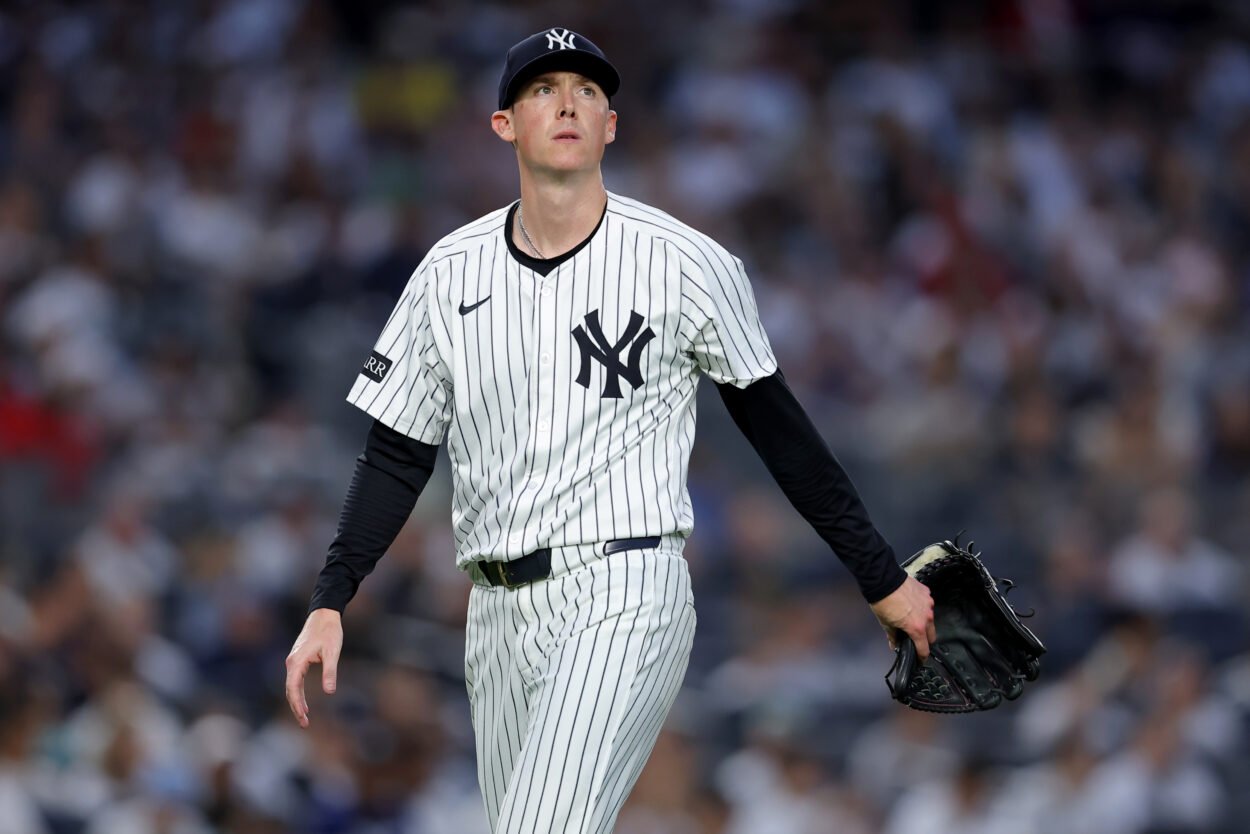
The New York Yankees didn’t have much time to feel sorry for themselves once the scope of their 2026 pitching problem became clear. Losing Gerrit Cole, Carlos Rodon, and Clarke Schmidt for the early portion of the season leaves a massive dent in the roster. Instead of chasing an instant headline, the Yankees opened the week by taking a quieter, steadier step toward stabilizing things. They brought back left-hander Ryan Yarbrough on a one-year agreement, a move that won’t dominate winter chatter but makes plenty of baseball sense.
According to MLB insider Robert Murray, the deal is in place pending a physical, and Ken Rosenthal echoed the report. The exact financial terms remain a mystery, but the value for the Yankees lies more in flexibility than cost. Yarbrough gives them someone who can either handle bulk innings or slide into a more traditional rotation role, depending on how the first few months unfold.
A season of extremes shaped the Yankees’ decision
Yarbrough’s first stretch with the Yankees was one of the better stories of their chaotic 2025 season. He entered the rotation almost by necessity, stepping in for an ineffective Carlos Carrasco, and for three months he delivered the kind of composed, contact-management style that fit the Yankees perfectly. That run ended abruptly with an oblique strain in late June, and the team felt his absence immediately.

His return in September was rough. His ERA in that month was 7.27, and hitters seemed to be sitting on everything. But the context mattered. He wasn’t fully healthy yet, and his usage bounced around as the Yankees tried to find any combination of arms to survive the final weeks. Beneath the shaky late-season numbers, the front office still saw the pitcher who posted a 3.83 ERA as a starter and a 4.36 ERA overall in 64 innings.
Those splits also made the decision easier. Yarbrough is simply more effective when he’s built into a routine and allowed to work deeper into games. With multiple rotation spots vacant to start the year, the Yankees can give him precisely that.
How Yarbrough fits into the Yankees’ early-season blueprint
If the season started today, the projected early rotation reads: Max Fried, Cam Schlittler, Luis Gil, Will Warren, and Yarbrough. It’s an unusual mix of veterans, inconsistent yet talented arms, and pitchers with real upside but limited durability. That’s why the Yankees needed someone like Yarbrough. He isn’t electric, and nobody pretends he is, but he stabilizes the floor of a rotation that could sway wildly depending on how the younger pitchers handle expanded workloads.
There’s also the long view. Once Cole, Schmidt, and Rodon work their way back to full health, Yarbrough can transition into a multi-inning relief role that has always suited him. He’s done it before, he’s comfortable doing it again, and he doesn’t require the kind of maintenance that disrupts the bullpen’s rhythm.

That versatility may sound like a cliché, but for a team navigating months of uncertainty, it’s essential. The Yankees need innings from trustworthy arms, not lottery tickets. They also need flexibility, because nothing about this early-season stretch will be predictable.
What the move says about the Yankees’ offseason approach
Bringing back Yarbrough hints that the Yankees might not pursue a full-scale rotation remodel, at least not aggressively. They still have time to chase a splash, but this agreement signals they’re committed to a layered approach: build depth, preserve payroll options, and avoid relying too heavily on prospects who may not yet be ready for full-season volume.
It also shows something else. The Yankees watched Yarbrough handle pressure, adapt to role changes, and fight back from injury. There’s trust there. Sometimes that matters as much as velocity or analytics models when a season begins with more questions than answers.
There’s plenty of offseason left, and the Yankees will almost certainly add more pitching. But re-signing Yarbrough gives them a piece they know works in their system. With three rotation anchors already set to miss time, maybe familiarity is exactly what this team needs.
Will it be enough to keep the Yankees steady until their stars return, or is this just the opening move in a larger plan?
